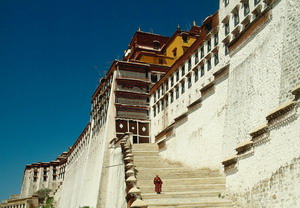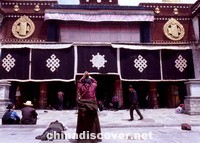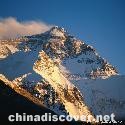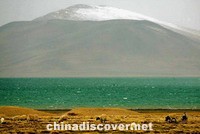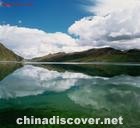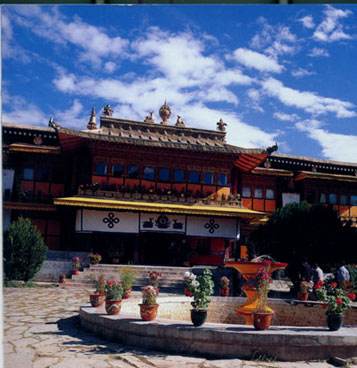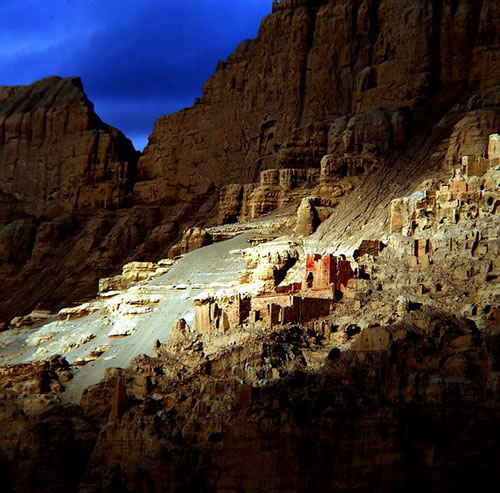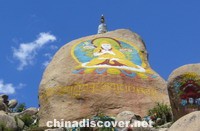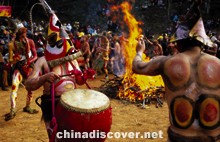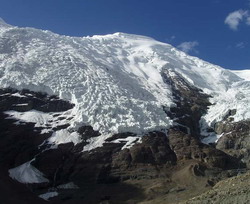Nagri-Western Tibet
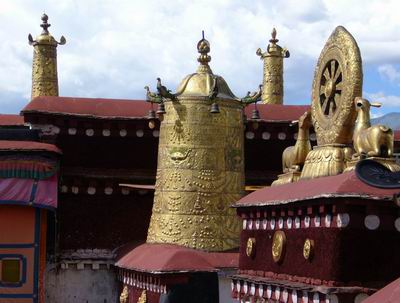
-
Province:Tibet (Chinese: 西藏, Pinyin: Xī Zàng)
-
Population :2,840,000
-
Area :1,228,400 square km (474,300 square mile)
-
Overview:With an average elevation of 4,900 metres (16,000 ft), Tibet has long been a favored destination for tourists from around the world.
Overview
Nagri, the western region of Tibet, is one of the most remote and inaccessible part of China. Nagri is a real frontier, trip to Nagri is marked by stunning, if desolate, scenery, and sacred Mt. Kailash (Tibetan: Kang Rinpoche) and Lake Manasarovar (Mapham Yum-tso) are two of the most remote and legendary travel destinations in the world. You have to be a certain knid of person to undertake this journey-many of the pilgrims on the road have been planning it all their lives. And for the truly intrepid there are the other worldly ruins are the ancient Guge Kindom and Nagri's almost unknown prehistoric rock carvings near Putok.
Making the pilgrimage to one of the most mystical an dremote corner of the world, joining the crowds at holy Mt. Kailash for the Sage Dawa Festival, visiting sacred Lake Manasarovar, a body of turpquoise water bordered by snowy peaks, tunnelling through the mountain ruins of the ancient Guge Kindom at Tsaparang, spotting the outlines of prehistoric engravings in the cliffs near Rutok, these can be your memorable experiences.
Know More
A brief history
Most histories of Tibet begin with the kings of the Yarlung Valley region and their unification of central Tibet in the 7th century. But it is throught that Shangshung Kingdom of western Tibet probably ruled the Tibetan plateau for several centuries before this. According to some scholars, the Bon religion made its way into the rest of Tibet from here. The Shangshung Kingdom may also have served as conduit for Tibet's earliest contacts with Buddhism. For more on Bon, see the boxed text ' Bon' in the Kham (Eastern Tibet) chapter.
Khyunglung Monastery, on the Sutlej River near Tirthapuri Hot Springs, and ruins in its near vicinity are thought to mark the site of the old kingdom. The next regional power to emerge in Nagri was the Guge Kingdom in the 9th century. Ater the assassination of the anti-Buddhist Lhasa King Langdharma, one of the king's sons, Wosung, established this kingdom at Tsaparang, west of Lake Manasarovar and Mt. Kailash. The Guge Kingdom, via its contacts with India, led a Buddhist revival on the Tibetan plateau and was home to over 100 monasteries, most of them now in ruins.
In the late 16th century, the Jesuits took an interest in the remote kingdom of Guge. At their enclave in Goa, rumours reached the Jesuits of a kingdom whose religion strongly resembled Catholicism-probably a result of the monastic nature of Tibetan Buddhism. At this point, Nagri became so marginalised in history books.
Must See
Mt. Kailas
Throughout Asia exist stories of a great mountain, the navel of the world, from which flow four great rivers that give life to the areas they pass through, this is the Mt. Kailas, which is the key to the drainage system of the Tibetan plateau. Four of the great rivers of the Indian subcontinent originate here: the Karnali, which feeds in to Ganges (south); the Indus (north); the Sutlej (west); and the Brahmaputra (Yarlung Tsangpo, east).
Mt. Kailash, at 6714m, is not the mightiest of the mountains in the region, but with its hulking shape-like the handle of a millstone, according to Tibetans-and its year-long snow-capped peak, it stands apart from the pack. Its four sheer walls match the cardinal points of the compass, and its southern face is famously marked by a long vertical cleft punctuated halfway down its traverse by a horizontal line of rock strata. ...more
Lake Manasarovar
Lake Manasarovar (Mapham yum-tso; 4,556m), or Mapham Yum-tso (Victorious Lake) in Tibetan, is the the most venerated of Tibet's many lakes. According to ancient Hindu and Buddhist cosmology the four great rivers of the Indian su-continent, the Indus, Ganges, Sutlej and Brahmaputra, arise from Manasarovar. In reality, only the Sutlej River originates at the lake, although the headwaters of the other great rivers are in close proximity. Just 20km from Mt Kailash across the Barkha plain, Manasarovar can be circumambulated in four or five days. Five of the original eight monasteries in the area have been partially rebuilt...more
Chiu Monastery
33km south of Darchen and 8km south of the main highway, Chiu Monastery enjoys a fabulous location atop a craggy hill overlooking the sapphire blue Lake Manasarovar. The chape here contains images of Sakyamuni (Sakya Thukpa) and Guru Rinpoche. Climb up to the roof of the monastery for stunning views of the lake. The huge peak on the southern horizon is 7,728m Gurla Mandata, near the border with Nepal.
There are hot springs behind the monastery, and a small glass-roofed bathhouse close to the village. The water is channelled from the hot springs into individual cubicles via open ducts and it's barely likewarm by the time you can get a few centimetres of water into the mouldy tiled tubs. You can also do your laundry in the warm outflow around the back...more
Guge Kingdom
Tholing and neighbouring Tsaparang are the ruined former capitals of the ancient Guge kingdom of Nagri, accessed via the modern Chinese town of Zanda (also known as Thsasda or Zhada). Tsaparang, in particular, is a truly amazing sight, in part because it is so little known. The 9th-century ruins are carved into the steep sides of an imposing ridge. Cave dwellings, stunning monastic buildings and a ruined palace are linked by twisting paths and secret tunnels that worm their way into the rock itself.
This barren landscape seems an unlikely place for a major civilisation to have developed; yet the Guge Kingdom thrived as an important stop on the trade route between India and Tibet. By the 10th century it was a wealthy centre supporting several thousand people, and the great Guge King Yeshe O began to nurture an exdhange of ideas between India and Tibet. Yeshe O sent the young monk Rinchen Zangpo to study in India; the monk returned 17 years later to become one of Tibet's greatest translators of Sanskrit texts, and a key figure in the revival of Buddhism across the Tibetan plateau ...more
